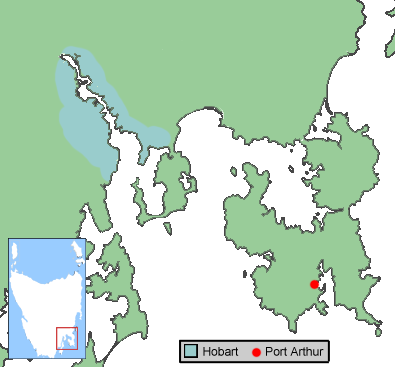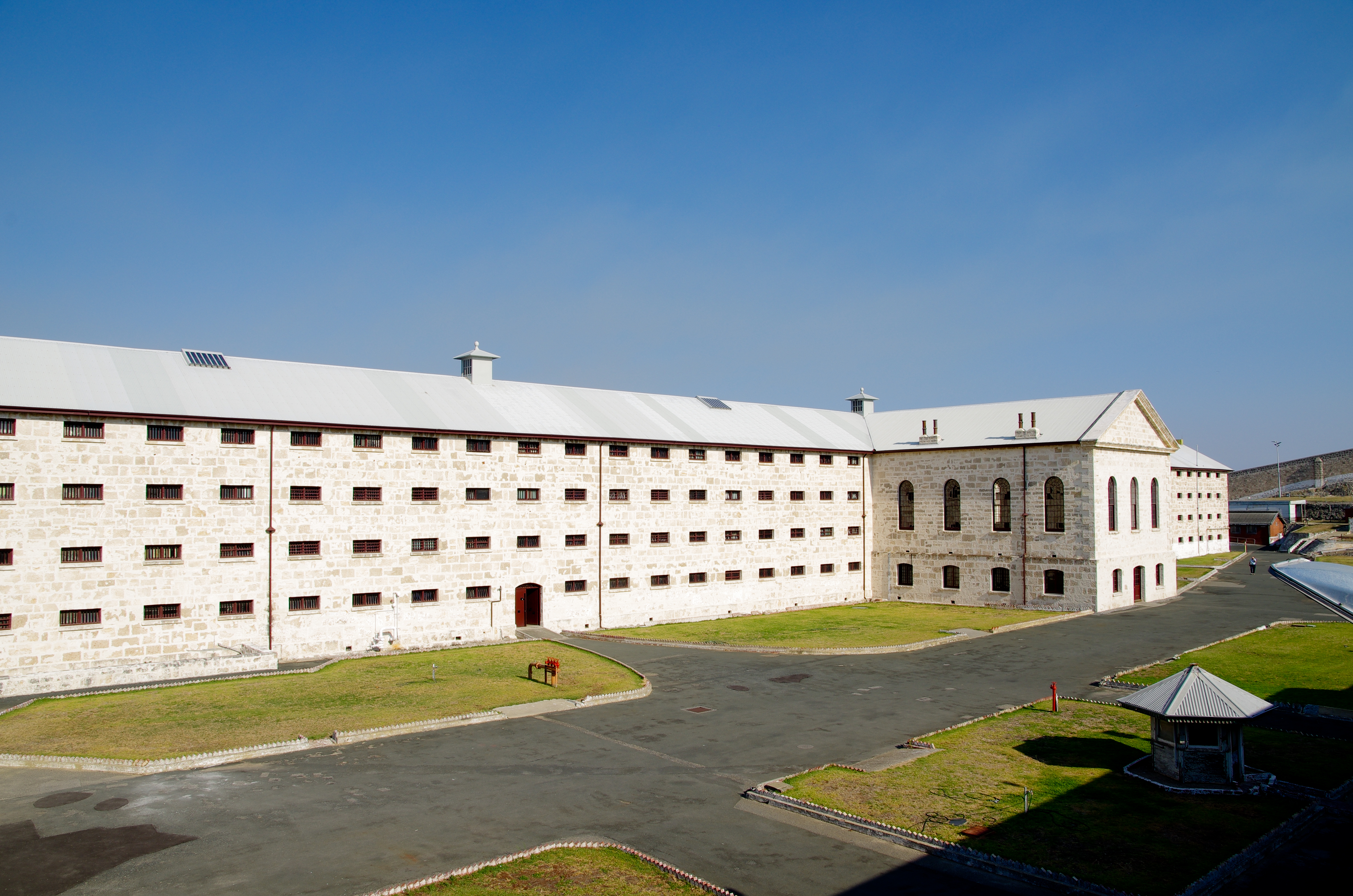|
Australian Convict Sites
Australian Convict Sites is a World Heritage property consisting of 11 remnant penal sites originally built within the British Empire during the 18th and 19th centuries on fertile Australian coastal strips at Sydney, Tasmania, Norfolk Island, and Fremantle; now representing "...the best surviving examples of large-scale convict transportation and the colonial expansion of European powers through the presence and labour of convicts". Penal sites included The 11 penal sites constituting the Australian Convict Sites World Heritage listed property are: # Kingston and Arthur's Vale Historic Area ("KAVHA"), Norfolk Island. # Old Government House and Domain ("Old Government House"), New South Wales. # Hyde Park Barracks, New South Wales. # Brickendon and Woolmers Estates ("Brickendon-Woolmers"), Tasmania. # Darlington Probation Station ("Darlington"), Tasmania. # Old Great North Road, New South Wales. # Cascades Female Factory ("Cascades"), Tasmania. # Port Arthur Historic Site ("Por ... [...More Info...] [...Related Items...] OR: [Wikipedia] [Google] [Baidu] |
Port Arthur, Tasmania
Port Arthur is a town and former convict settlement on the Tasman Peninsula, in Tasmania, Australia. It is located approximately southeast of the state capital, Hobart. The site forms part of the Australian Convict Sites, a World Heritage property consisting of 11 remnant penal sites originally built within the British Empire during the 18th and 19th centuries on fertile Australian coastal strips. Collectively, these sites, including Port Arthur, are described by UNESCO as "... the best surviving examples of large-scale convict transportation and the colonial expansion of European powers through the presence and labour of convicts." In 1996, the town was the scene of the Port Arthur massacre, the deadliest instance of mass murder in post-colonial Australian history. History Port Arthur was named after George Arthur, the lieutenant governor of Van Diemen's Land. The settlement started as a timber station in 1830, but it is best known for being a penal colony. Penal colo ... [...More Info...] [...Related Items...] OR: [Wikipedia] [Google] [Baidu] |
Darlington Probation Station
Darlington Probation Station was a convict penal settlement on Maria Island, Tasmania (then Van Diemen's Land), from 1825 to 1832, then later a convict probation station during the last phase of convict management in eastern Australia (1842–1850).Australian Department of Environment, Water, Heritage, and the Arts "Darlington Probation Station" webpages 6 August 2010 A number of the buildings and structures have survived from this earlier era relatively intact and in good condition, and of the 78 convict probation stations once built in Tasmania, the buildings and structures at Maria Island are regarded as "the most outstanding representative example", [...More Info...] [...Related Items...] OR: [Wikipedia] [Google] [Baidu] |
Modern Era
The modern era or the modern period is considered the current historical period of human history. It was originally applied to the history of Europe and Western history for events that came after the Middle Ages, often from around the year 1500, like the Reformation in Germany giving rise to Protestantism. Since the 1990s, it has been more common among historians to refer to the period after the Middle Ages and up to the 19th century as the early modern period. The modern period is today more often used for events from the 19th century until today. The time from the end of World War II (1945) can also be described as being part of contemporary history. The common definition of the modern period today is often associated with events like the French Revolution, the Industrial Revolution, and the transition from nationalism toward the liberal international order. The modern period has been a period of significant development in the fields of science, politics, warfare, and techn ... [...More Info...] [...Related Items...] OR: [Wikipedia] [Google] [Baidu] |
Age Of Enlightenment
The Age of Enlightenment (also the Age of Reason and the Enlightenment) was a Europe, European Intellect, intellectual and Philosophy, philosophical movement active from the late 17th to early 19th century. Chiefly valuing knowledge gained through rationalism and empiricism, the Enlightenment was concerned with a wide range of social and Politics, political ideals such as natural law, liberty, and progress, toleration and fraternity (philosophy), fraternity, constitutional government, and the formal separation of church and state. The Enlightenment was preceded by and overlapped the Scientific Revolution, which included the work of Johannes Kepler, Galileo Galilei, Francis Bacon, Pierre Gassendi, Christiaan Huygens and Isaac Newton, among others, as well as the philosophy of Descartes, Hobbes, Spinoza, Leibniz, and John Locke. The dating of the period of the beginning of the Enlightenment can be attributed to the publication of René Descartes' ''Discourse on the Method'' in 1 ... [...More Info...] [...Related Items...] OR: [Wikipedia] [Google] [Baidu] |
Forced Migration
Forced displacement (also forced migration or forced relocation) is an involuntary or coerced movement of a person or people away from their home or home region. The United Nations High Commissioner for Refugees, UNHCR defines 'forced displacement' as follows: displaced "as a result of persecution, conflict, generalized violence or human rights violations". A forcibly displaced person may also be referred to as a "forced migrant", a "displaced person" (DP), or, if displaced within the home country, an "internally displaced person" (IDP). While some displaced persons may be considered refugees, the latter term specifically refers to such displaced persons who are receiving legally-defined protection and are recognized as such by their country of residence and/or international organizations. Forced displacement has gained attention in international discussions and policy making since the European migrant crisis. This has since resulted in a greater consideration of the impacts o ... [...More Info...] [...Related Items...] OR: [Wikipedia] [Google] [Baidu] |
Convict Labourers In Australia In The Early 20th Century
A convict is "a person found guilty of a crime and sentenced by a court" or "a person serving a sentence in prison". Convicts are often also known as "prisoners" or "inmates" or by the slang term "con", while a common label for former convicts, especially those recently released from prison, is "ex-con" ("ex-convict"). Persons convicted and sentenced to non-custodial sentences tend not to be described as "convicts". The label of "ex-convict" usually has lifelong implications, such as social stigma or reduced opportunities for employment. The federal government of Australia, for instance, will not, in general, employ an ex-convict, while some state and territory governments may limit the time for or before which a former convict may be employed. Historical usage The particular use of the term "convict" in the English-speaking world was to describe the huge numbers of criminals, both male and female, who clogged British gaols in the 18th and early 19th century. Their crimes ... [...More Info...] [...Related Items...] OR: [Wikipedia] [Google] [Baidu] |
Australian National Heritage List
The Australian National Heritage List or National Heritage List (NHL) is a heritage register, a list of National heritage site, national heritage places deemed to be of outstanding heritage significance to Australia, established in 2003. The list includes natural and historic places, including those of cultural significance to Indigenous Australians such as Aboriginal Australian sacred sites. Having been assessed against a set list of criteria, once a place is put on the National Heritage List, the provisions of the ''Environment Protection and Biodiversity Conservation Act 1999'' (''EPBC Act'') apply. All places on this list can be found on the online Australian Heritage Database, along with other places on other Australian and world heritage listings. History The National Heritage List was established in 2003 by an amendment to the ''Environment Protection and Biodiversity Conservation Act 1999''. The National Heritage List, together with the Commonwealth Heritage List, repl ... [...More Info...] [...Related Items...] OR: [Wikipedia] [Google] [Baidu] |
Western Australia
Western Australia (WA) is the westernmost state of Australia. It is bounded by the Indian Ocean to the north and west, the Southern Ocean to the south, the Northern Territory to the north-east, and South Australia to the south-east. Western Australia is Australia's largest state, with a land area of , and is also the List of country subdivisions by area, second-largest subdivision of any country on Earth. Western Australia has a diverse range of climates, including tropical conditions in the Kimberley (Western Australia), Kimberley, deserts in the interior (including the Great Sandy Desert, Little Sandy Desert, Gibson Desert, and Great Victoria Desert) and a Mediterranean climate on the south-west and southern coastal areas. the state has 2.965 million inhabitants—10.9 percent of the national total. Over 90 percent of the state's population live in the South-West Land Division, south-west corner and around 80 percent live in the state capital Perth, leaving the remainder ... [...More Info...] [...Related Items...] OR: [Wikipedia] [Google] [Baidu] |
Fremantle Prison
Fremantle Prison, sometimes referred to as Fremantle Gaol or Fremantle Jail, is a former Australian prison and World Heritage Site in Fremantle, Western Australia. The site includes the prison cellblocks, gatehouse, perimeter walls, cottages, and tunnels. It was initially used for convicts transported from Britain, but was transferred to the colonial government in 1886 for use for locally-sentenced prisoners. Royal Commissions were held in 1898 and 1911, and instigated some reform to the prison system, but significant changes did not begin until the 1960s. The government department in charge of the prison underwent several reorganisations in the 1970s and 1980s, but the culture of Fremantle Prison was resistant to change. Growing prisoner discontent culminated in a 1988 riot with guards taken hostage, and a fire that caused $1.8 million worth of damage. The prison closed in 1991, replaced by the new maximum-security Casuarina Prison. The prison was administered by a comptro ... [...More Info...] [...Related Items...] OR: [Wikipedia] [Google] [Baidu] |
Cockatoo Island (New South Wales)
Cockatoo Island Wareamah is a UNESCO World Heritage Site at the confluence of the Parramatta River and Lane Cove River in Sydney Harbour, New South Wales, Australia. Cockatoo Island is the largest of several harbour islands that were once heavily timbered sandstone knolls. Originally the Island rose to above sea level and was but it has been extended to and is now cleared of most vegetation. Called ''Wa-rea-mah'' by the Indigenous Australians who traditionally inhabited the land prior to European settlement, the island may have been used as a fishing base, although physical evidence of Aboriginal heritage has not been found on the island. Between 1839 and 1869, Cockatoo Island operated as a convict penal establishment, primarily as a place of secondary punishment for convicts who had re-offended in the colonies. Cockatoo Island was also the site of one of Australia's biggest shipyards, operating between 1857 and 1991. The first of its two dry docks was built by convict ... [...More Info...] [...Related Items...] OR: [Wikipedia] [Google] [Baidu] |
Coal Mines Historic Site
Coal Mines Historic Site was a convict probation stationAustralian Department of Environment, Water, Heritage, and the Arts "Coal Mines Historic Site" webpages 5 August 2010 and the site of 's (then 's) first operational , serving for a period of 15 years (1833–1848) "as a place of punishment for the 'worst class' of ... [...More Info...] [...Related Items...] OR: [Wikipedia] [Google] [Baidu] |
Port Arthur Historic Site
Port Arthur is a town and former convict settlement on the Tasman Peninsula, in Tasmania, Australia. It is located approximately southeast of the state capital, Hobart. The site forms part of the Australian Convict Sites, a World Heritage property consisting of 11 remnant penal sites originally built within the British Empire during the 18th and 19th centuries on fertile Australian coastal strips. Collectively, these sites, including Port Arthur, are described by UNESCO as "... the best surviving examples of large-scale convict transportation and the colonial expansion of European powers through the presence and labour of convicts." In 1996, the town was the scene of the Port Arthur massacre, the deadliest instance of mass murder in post-colonial Australian history. History Port Arthur was named after George Arthur, the lieutenant governor of Van Diemen's Land. The settlement started as a timber station in 1830, but it is best known for being a penal colony. Penal colon ... [...More Info...] [...Related Items...] OR: [Wikipedia] [Google] [Baidu] |








